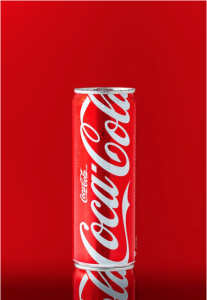12.3 Global Branding

A global brand is the brand name of a product that has worldwide recognition. Indeed, the world does become flatter to the extent a brand is recognized, accepted, and trusted across borders. Some of the most-recognized brands in the world include Coca-Cola, IBM, Microsoft, GE, Nokia, McDonald’s, Google, Toyota, Intel, and Disney (Frampton et al., 2010).
The advantages of creating a global brand are economies of scale in production and packaging, which lower marketing costs while leveraging power and scope. The disadvantages, however, are that consumer needs differ across countries, as do legal and competitive environments. So while global branding, and consumer acceptance of such, is a flattener, significant country differences remain even when a firm has a strong global brand. Companies may decide to follow a global-brand strategy but also make adjustments to their communications strategy and marketing mix locally based on local needs.
The decision companies face is whether they should market one single brand around the world or multiple brands. Coca-Cola uses the Coke name on its cola products around the world but markets its water under the Dasani brand. Nestlé uses a local branding strategy for its 7,000 brands but also promotes the Nestlé corporate brand globally.
Acer’s Multiple-Brand Strategy
PC maker Acer sells its personal computers under four different brands. Using a multi-brand strategy is a good choice when a country has a strong, positive association with a particular brand. For example, when Taiwan-based Acer bought US PC-maker Gateway, Acer kept the Gateway brand to use in the United States for midtier PCs. In Europe, however, Acer uses the Packard Bell brand. Acer also has two other brands, which are segmented by price. Acer’s eMachines brand is for the lower-end consumer who is most focused on price, whereas the Acer brand is reserved for the highest-quality products aimed at technophiles. This multi-brand strategy also helps Acer’s distribution. As Acer’s chief marketing officer, Gianpiero Morello, says, “It’s difficult to get a retailer to place 50 percent of his space with one brand. It’s easier to split that same space with three brands.” (Einhorn & Culpan, 2010).
Global Brand Web Strategy
Companies that are promoting their global brands successfully on the web include Google, Philips, Skype, Ericsson, Hewlett-Packard, and Cisco Systems. These companies are mindful of the cultural and language differences across countries. They have created websites in local languages and are using images and content specific to each country. At the same time, however, each country website has the same look and feel of the main corporate website to preserve the overall brand (Ballance, 2009).
Planning a Brand Strategy for Emerging Markets
Entering an emerging market with a developed-country brand poses an extra challenge. Income levels in emerging markets are lower, so companies tend to price their products as inexpensively as possible. This low-cost strategy may have consequences for the company’s brand, however. For example, if a company introduces its brand as a “premium” product despite having a lower price, how will it introduce and differentiate its true “premium” brand later as consumers’ incomes rise?
Centralized versus Decentralized Marketing Decisions
Who has the authority to make marketing decisions? In a centralized-marketing organizational structure, the home-country headquarters retains decision-making power. In a decentralized-marketing organizational structure, the regions are able to make decisions without headquarters’ approval. The advantage of the centralized structure is speed, consistency, and economies of scale that can save costs (such as through global-marketing campaigns). The disadvantages are that the marketing isn’t tied to local knowledge and doesn’t reflect local tastes, so sales aren’t optimized to appeal to regional differences.
Core Principles of International Marketing – Chapter 9.2 by Babu John Mariadoss is licensed under a Creative Commons Attribution-NonCommercial-ShareAlike 4.0 International License, except where otherwise noted.

